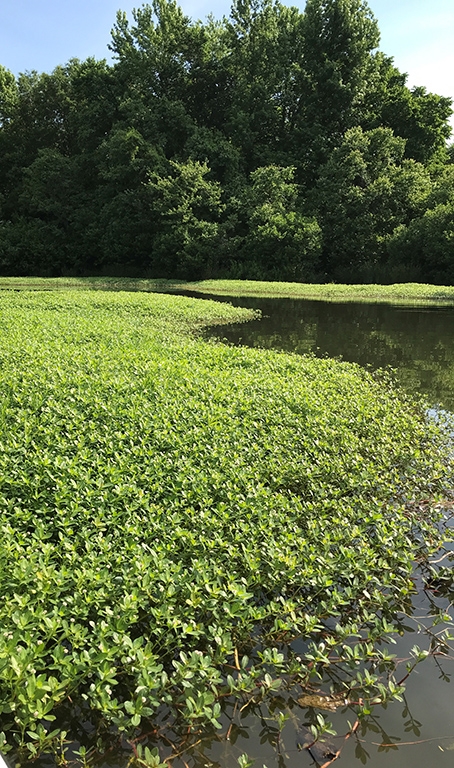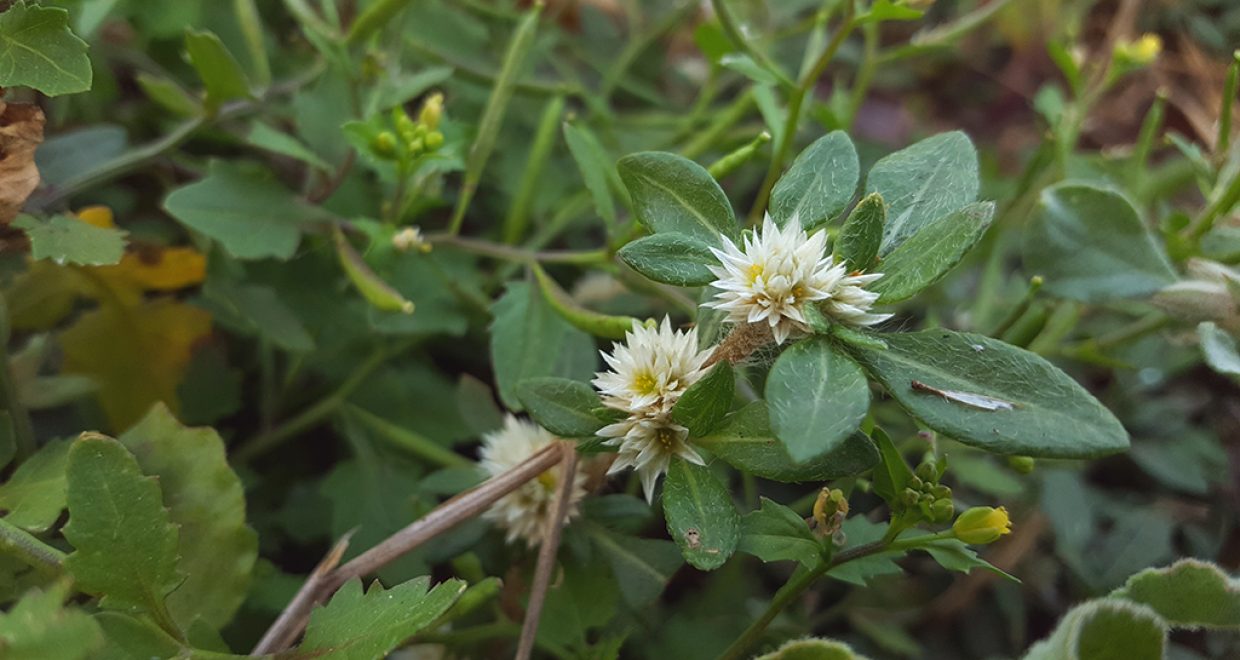Do genetic differences explain why some populations of alligatorweed escape control?
Alligatorweed is an invasive plant from South America found in or near bodies of water across the southern U.S. and California. A biological control program launched in the late 1960s reduced the prevalence of the invader, but the results varied across geographies. New research featured in the journal Invasive Plant Science and Management (IPSM) shows the explanation for these spotty control results may lie in genetics.
When researchers explored the genotypes of plants collected from 90 sites, they found U.S. populations of alligatorweed are genetically diverse across various locations. This suggests the weed has been introduced to the U.S. multiple times from its native South American habitat.

The team found six genetic variations of alligatorweed, including both narrow-stem and broad-stem genotypes that are known to respond differently to both herbicides and biological controls. Though additional testing is required, it is suspected the other four genotypes may also differ in their response to control measures and climates.
What can we do with these findings? The genetic markers identified in the study provide a quick way to determine the types of alligatorweed present at a location and to explore the effectiveness of various control strategies. In some areas, a single genotype may predominate and may respond to a single control strategy. In areas with multiple genotypes, a more varied approach may be required.
Want to know more? The article “High genetic diversity in the clonal aquatic weed Alternanthera philoxeroides in the United States” , by Dean A. Williams, Nathan E. Harms, Ian A. Knight, Brenda J. Grewell, Caryn Joy Futrell and Paul D. Pratt, published in Invasive Plant Science and Management, is available free for a month.
Photo above title: courtesy of Shutterstock






